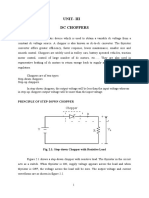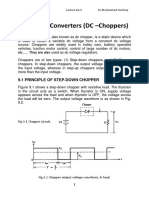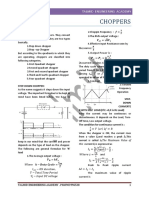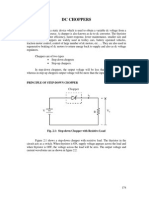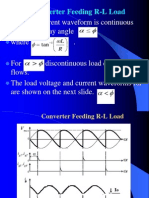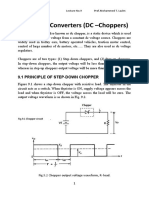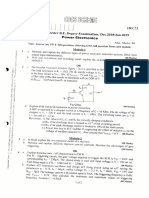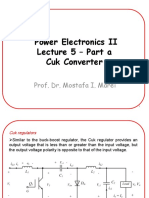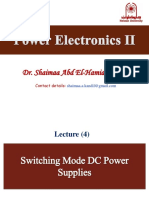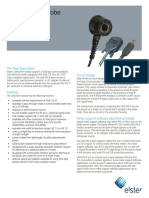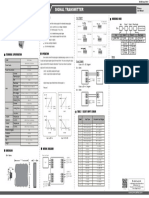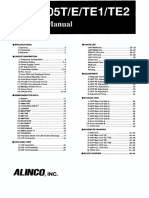0% found this document useful (0 votes)
210 views23 pagesPower Electronics Course Guide
This document provides information about a Power Electronics II course including instructors, textbooks, and lecture topics. The first lecture covers DC-DC converters including their principle of operation, equations for average output voltage and current, duty cycle generation, and analysis of a step-down chopper with resistive-inductive load. Key points covered include derivation of load current and ripple current equations and conditions for maximum ripple current.
Uploaded by
Abd El-Rahman DabbishCopyright
© © All Rights Reserved
We take content rights seriously. If you suspect this is your content, claim it here.
Available Formats
Download as PDF, TXT or read online on Scribd
0% found this document useful (0 votes)
210 views23 pagesPower Electronics Course Guide
This document provides information about a Power Electronics II course including instructors, textbooks, and lecture topics. The first lecture covers DC-DC converters including their principle of operation, equations for average output voltage and current, duty cycle generation, and analysis of a step-down chopper with resistive-inductive load. Key points covered include derivation of load current and ripple current equations and conditions for maximum ripple current.
Uploaded by
Abd El-Rahman DabbishCopyright
© © All Rights Reserved
We take content rights seriously. If you suspect this is your content, claim it here.
Available Formats
Download as PDF, TXT or read online on Scribd
/ 23





